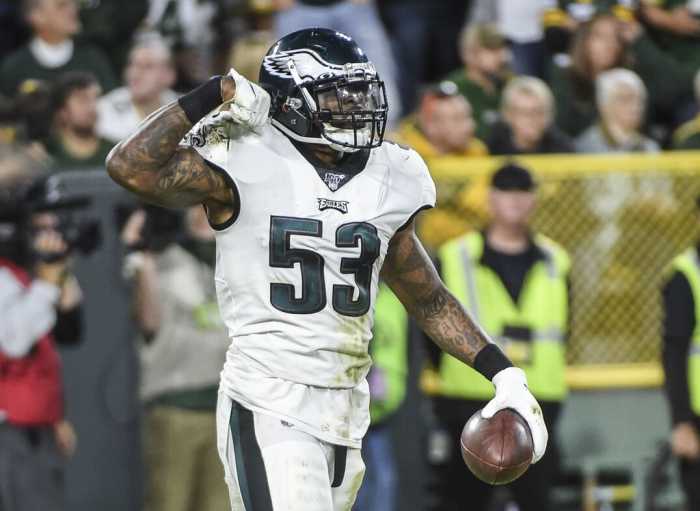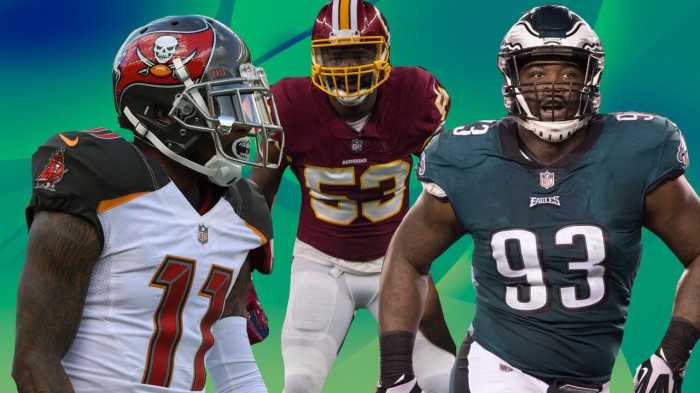A lot has changed in the past four years. From the drafting of Carson Wentz and a miraculous Super Bowl run, to double doinks and anonymous sources, it’s been a total rollercoaster for the Philadelphia Eagles. But after a year of turbulence, injuries, and a lot of white noise, Howie Roseman has been forced to re-think how he approaches this offseason.
What doesn’t help is that for the second year in a row, his right-hand man has been poached by another team. Roseman met with reporters after the season ended in heartbreaking fashion against Seattle, preaching that the team have to get younger and most importantly healthier.
But this year is significant in more ways than just stating the obvious. It’s the fifth offseason of the initial ‘five-year Super Bowl window’. With 3 playoff appearances and a Lombardi Trophy, it’s definitely been an incredibly successful one, but what about the start of the next window?
In 2016, the Eagles invested $280 million in guaranteed money between January and June. Most of that went on fortifying the front-lines. Fletcher Cox, Lane Johnson, Brandon Brooks, Zach Ertz, Vinny Curry, and even Malcolm Jenkins were all given long-term contracts. While all of those players are still on the team, many of them have received new contracts, keeping their services in town for the considerable future. Others are in line to, and a few may sadly not be a part of that continued vision. But the overall vision has to remain.
The main difference between then and now is that Carson Wentz is no longer a quarterback with high potential. He’s a star and he’s currently the highest-paid quarterback in the NFL. Brandon Brooks and Lane Johnson are in very similar boats, and a new face will be taking over blindside responsibilities, conveniently, for up to another five years, in the way of Andre Dillard.
Philadelphia absolutely needs to focus on the skill-position players. On finding stability at cornerback, on injecting speed at wide receiver. They have an abundance of cap space and some clear holes to fill…but they also cannot afford to suddenly deviate from the formula that built this team to begin with.
The free-agent acquisitions have been less than impressive over the last 12 months and pose a stark contrast to the acquisition of names like Patrick Robinson and LeGarrette Blount. The formula of finding cheap veterans and signing them to prove-it deals definitely works, but for whatever reason, that backfired in 2019. However, it shouldn’t deter them from applying it again this offseason…especially considering how much pressure now falls on this window.
Zach Ertz could well be in-line for a contract extension, and Malcolm Jenkins, arguably the team’s most consistent defensive player, played in every single defensive snap last year without a sprinkle of guaranteed money, citing afterward that he won’t be back without a new deal.
On the defensive line, Fletcher Cox continues to be the star of the show, but the supporting cast has been hit by injuries a few too many season’s in a row. Brandon Graham isn’t getting any younger and Derek Barnett’s development should rightly be questioned, with a career-high in sacks not telling the whole story.
It’s easy to turn to free agency and be drawn in by a wideout like Robby Anderson, or to an elite cornerback like Byron Jones. But after 2015 left the Eagles scarred and scared, it’s an ideal they’ve been hesitant to explore for quite some time.
As for the young talent that’s been drafted to develop behind the cornerstones and free agents, it has been a mixed bag. Re-stocking the cupboard is more logical than taking bigger risks on players who for whatever reason just haven’t come along as much as people would hope. Coaching staff changes may impact this, but there’s nothing wrong with keeping the conveyor belt moving, breaking the mold of being ‘too attached’ to certain players.
The Eagles need to get younger and healthier, absolutely. But what helped build this team was a fundamental vision. Building from the ball outward, using free agents to plug holes while young talent develops, and signing cornerstone players to deals that can be reworked to manipulate the cap. With some of those deals nearing an end and the talent that was once young, now hitting crucial points in their career, it makes more sense to tweak the old plan, than to blow it up and start a new one.
Mandatory Credit: Bill Streicher-USA TODAY Sports





























